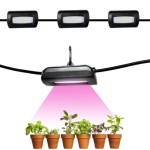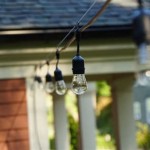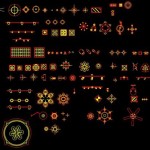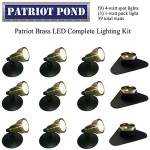Continuous Lighting For Outdoor Photography: A Comprehensive Guide
Outdoor photography presents unique challenges due to the unpredictable nature of sunlight. While natural light is often perceived as the ideal, its variability necessitates adaptation and often compromise. Continuous lighting offers a controlled alternative, enabling photographers to sculpt light and achieve consistent results regardless of the ambient conditions. This article explores the application, advantages, and considerations of using continuous lighting in outdoor photography.
Continuous light sources provide a constant stream of illumination, unlike flash photography, which emits a brief burst of light. This constant illumination allows photographers to immediately visualize the effect of the light on the subject, making adjustments to intensity, direction, and diffusion in real time. The predictable nature of continuous light streamlines the creative process and ensures that the final image aligns with the photographer's vision.
Understanding the Advantages of Continuous Lighting
The primary advantage of continuous lighting lies in its WYSIWYG (What You See Is What You Get) nature. Unlike flash, where the photographer must rely on experience and test shots to predict the outcome, continuous light reveals its impact directly. This immediate feedback loop accelerates learning and allows for more nuanced control over the final image. This is particularly beneficial for photographers new to artificial lighting or those working in dynamic outdoor environments where available light changes rapidly.
Another significant advantage is the ease of use for video applications. Many photographers are now hybrid shooters, capturing both still images and video. Continuous lighting eliminates the need for separate lighting setups for each medium, providing a versatile solution for both photography and videography. The consistent light source ensures uniformity across both image and video content, simplifying post-processing and creating a cohesive visual narrative.
Moreover, continuous lighting can be more discreet than flash, particularly in situations where drawing attention is undesirable. The constant, non-intrusive nature of the light source can be less disruptive to subjects, leading to more natural and authentic expressions. This is especially valuable in street photography, documentary work, and capturing candid portraits in outdoor settings.
Selecting the Right Continuous Light for Outdoor Use
Choosing the appropriate continuous light source for outdoor photography requires careful consideration of several factors, including power output, color temperature, portability, and weather resistance. LED panels are a popular choice due to their energy efficiency, relatively low heat output, and wide range of color temperature options. These panels are also generally more portable than traditional tungsten or HMI lights.
Power output is crucial for overpowering ambient light, especially in bright daylight. Measured in lumens or lux, the light's intensity must be sufficient to create the desired effect, whether it's providing fill light in shadows or acting as the key light to illuminate the subject. A higher power output allows the photographer to work with larger apertures, achieve shallower depths of field, and maintain faster shutter speeds, all of which contribute to creative flexibility.
Color temperature is equally important for achieving accurate and aesthetically pleasing results. Matching the color temperature of the continuous light to the ambient light is essential for avoiding color casts and maintaining a natural look. Many LED panels offer adjustable color temperature settings, allowing the photographer to dial in the desired warmth or coolness to complement the existing light. This adjustability is particularly useful in outdoor settings where color temperature can fluctuate throughout the day due to changes in weather and time.
Portability is a critical factor for outdoor photography, as photographers often need to carry their equipment over varying terrain. Lightweight and compact LED panels, powered by batteries, are ideal for on-location shoots. Consider the battery life of the light source and carry spare batteries to ensure uninterrupted operation. Weather resistance is another essential consideration, especially when shooting in unpredictable outdoor conditions. Look for lights that are rated for water resistance or are compatible with rain covers to protect them from the elements.
Practical Applications and Techniques for Outdoor Photography with Continuous Lighting
Continuous lighting can be applied in various ways to enhance outdoor photography. One common technique is to use it as fill light to reduce harsh shadows and create a more balanced exposure. By positioning the light source opposite the sun, the photographer can fill in the shadows on the subject's face, revealing details and creating a flattering look. This technique is particularly useful for portrait photography during midday sun.
Another application is to use continuous lighting as the key light, overpowering the ambient light and creating a more dramatic effect. This technique is often used in fashion and editorial photography to create a specific mood or style. By carefully positioning the light source and using modifiers such as softboxes or reflectors, the photographer can sculpt the light and create striking images that stand out from the natural landscape.
Continuous lighting can also be used to create backlighting or rim lighting effects, separating the subject from the background and adding depth to the image. By placing the light source behind the subject, the photographer can create a subtle glow around the edges, highlighting the subject's silhouette and adding a sense of dimensionality. This technique is particularly effective for portraits and landscape photography, adding a touch of magic to the scene.
Diffusing continuous light is crucial for creating soft and flattering illumination, particularly in portrait photography. Hard light, such as direct sunlight or undiffused artificial light, can create harsh shadows and unflattering highlights. Softboxes, umbrellas, and diffusion panels can be used to spread the light over a larger area, reducing the intensity of the shadows and creating a more pleasing effect. Experimenting with different diffusion techniques is essential for mastering the art of continuous lighting.
Balancing the color temperature of the continuous light with the ambient light is vital for achieving accurate color rendition. If the color temperature of the continuous light is too different from the ambient light, the subject may appear unnatural or have a noticeable color cast. Using a color temperature meter or a camera's white balance settings can help ensure that the colors are accurate and consistent throughout the image. Adjusting the color temperature of the continuous light to match the ambient light is a critical step in the post-processing workflow.
Furthermore, photographers should understand inverse square law. The law states that the intensity of light is inversely proportional to the square of the distance from the light source. This means that the further the light is from the subject, the dimmer it will appear. Understanding this principle is crucial for positioning the light source and adjusting its power output to achieve the desired effect. Moving the light closer to the subject will increase its intensity, while moving it further away will decrease its intensity.
Finally, safety considerations are paramount when working with electrical equipment outdoors. Always use grounded power cords and outlets, and protect the light source from moisture. Avoid using continuous lighting during rain or other inclement weather unless the equipment is specifically designed for such conditions. Exercise caution when working near water or other potential hazards, and always prioritize safety above all else.

St 60w Photography Light With Remote Control Dimmable Continuous Lighting Bowens Mount For Recording Wedding Outdoor Eu Plug K F Concept

Lighting For Outdoor Photo And B H Explora

Using Lights For Outdoor Night Time Portrait Photography

The Best Light For Shooting Outside Continuous Lights

St 60w Photography Light With Remote Control Dimmable Continuous Lighting Bowens Mount For Recording Wedding Outdoor Eu Plug K F Concept
Continuous Lighting Vs Strobes The Pros And Cons Of Each Petapixel
Indoor Outdoor Lighting Setups Simple Diagrams For Learning Photography
Continuous Lighting Vs Strobes The Pros And Cons Of Each Petapixel

Diffe Types Of Lighting In Photography Portrait 101

Strobe Flash Vs Continuous Lighting Which One Is Best For Me Formed From Light
Related Posts







